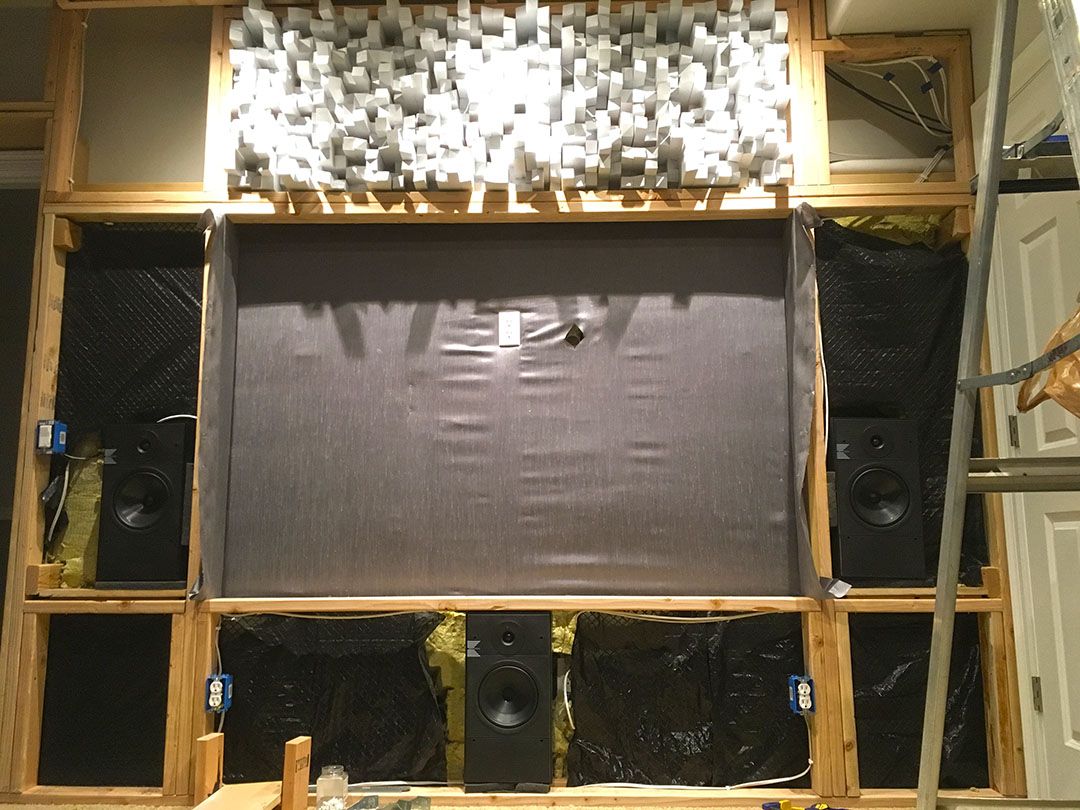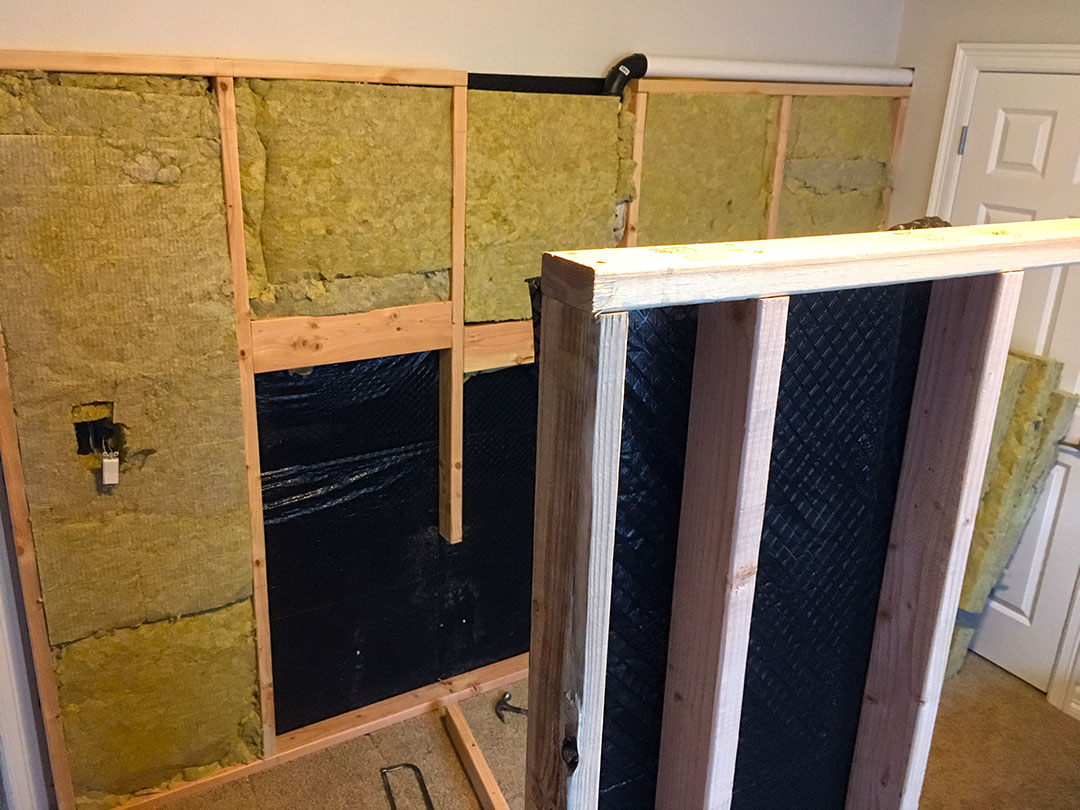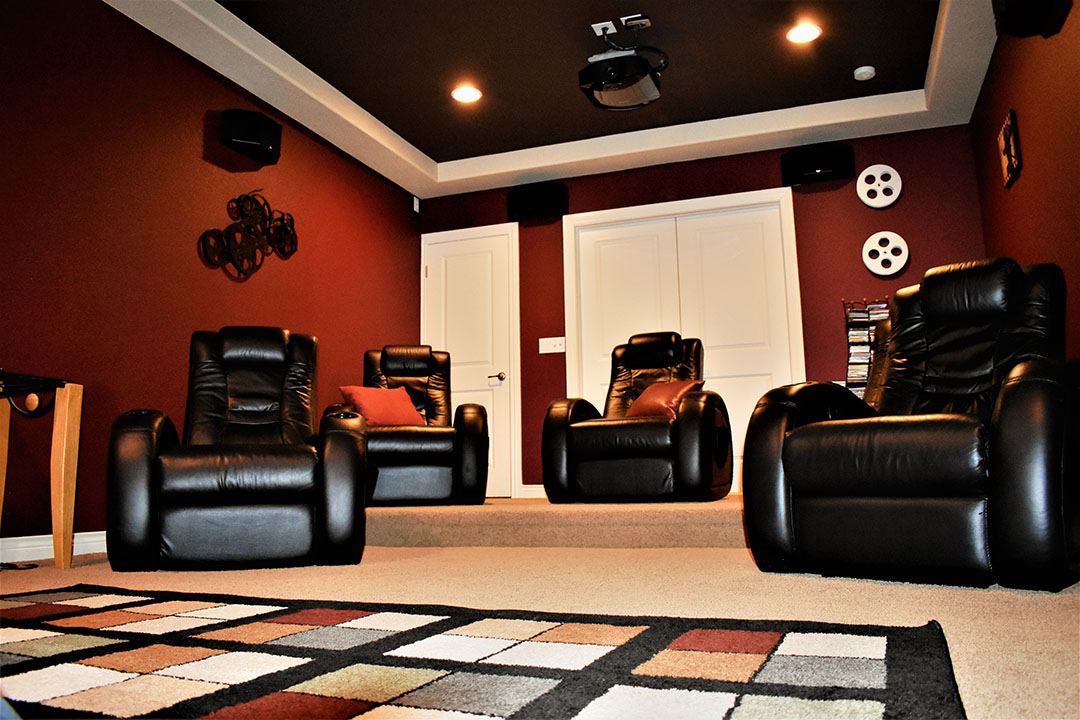
Achieving Optimal Soundproofing in Your Home Theater: A Guide to Acoustic Excellence

Don’t get the cops called on you while watching Batman.
In previous articles, we discussed room size and shape which primarily aided in choosing screen size and how sound waves reflect within the room. When talking about theater acoustics, there’s two main concerns: the first is the quality of sound within the theater, and the second is mitigating sound from traveling throughout the rest of the home and neighborhood. In this article we’ll be discussing the second.
What Is Soundproofing?
Many of you are probably familiar with seeing jagged foam glued to the walls and ceiling of recording studios or in the background of podcasts. Many home theaters use these same products. This foam is acoustic treatment, more specifically sound diffusion. Contrary to popular belief, this foam does not absorb or “quiet” the sound within the room, rather these jagged triangle-like pieces cut and divide sound waves so that they reflect off of the wall in a different direction than they traveled. If a sound wave hits a 90-degree flat wall, most of the sound will be reflect straight back the way that it came. You notice this as an echo or reverb. If you have a square room with flat walls, sound will equally be reflecting in every direction leading to a very poor and inarticulate listening experience. And that’s what this foam is designed to do – breakup the sound waves so that don’t reflect back in the same direction or at the same time. More on this in a future article.
Sound proofing, on the other hand, is the process of absorbing sound rather than diffusing or redirecting it. Sound proofing is the process of keeping the sound created by your theater in the theater room, and likewise, keeping the sound from outside of the theater room getting into the theater. In a properly sound proofed room, you won’t hear the dump truck outside dropping off several tons of rock, and your sleeping grandmother won’t hear the chase scene in The Fast and The Furious while taking a nap.

Density
When it comes to acoustic treatment, there is a lot to cover. It’s an entire field of science and many engineers have spent their entire lives trying to master it. We’re not going to be able to cover everything in this article, but hopefully give you the broad strokes. Sound waves have different wavelengths depending on their frequencies. Low, bass tones have long wavelengths and move slowly. High pitched frequencies have short wavelengths and move quickly. In order to stop a soundwave, it must run into resistance, and in turn, absorbed. Usually, this resistance is your walls, ceiling, and floor. Anyone who has lived in an apartment knows that typical drywall walls do a very poor job of stopping soundwaves.
The density of a wall is key in its ability to stop or mitigate sound. The thicker the wall, and the more packed together it is with material, the better job it will do. When beginning your home theater build in a finished basement, it’s recommended that you choose an area on the perimeter, that way you can utilize two concrete walls. Concrete is going to be the best commonly used construction material to soundproof a room. If you have the space and budget, it’s recommended that you complete the other two walls with concrete or cinderblocks. Thick, dense walls are key to keep sound where it belongs.

Building Techniques
There are other ways to construct soundproof walls without concrete. Usually this entails building a wall several times thicker than a standard 2x4 wall – or, basically building 2 walls. Starting from inside of the theater, you’d begin with double drywall. Behind that, you’d have a normal framed wooden wall filled with rockwool insulation. There are specific types of rockwool insulation that are specifically formulated for sound reduction. Next, you’d leave about 6 inch air gap – just a blank space – and then you’d repeat the process with rockwool, wood framing, and double drywall. All-in-all, your wall will be about 13-15 inches thick. Don’t skip the air gap – this is a key element in breaking up a soundwave.
Watertight
One last element to consider when approaching soundproofing from a construction standpoint. Think of soundwaves as water. Wherever air is able to travel freely, so does sound. Remember talking to your brother through the heat vents of your home as a child? These same heat vents carry conversations from the living room into the theater, and likewise whatever show you’re watching in the theater to every other room. Specific HVAC techniques can be used to minimize this, but must be done at the frame stage of the build. Further, all the of the wiring and plumbing within your theater walls have holes drilled that allow them to pass through the studs – these holes need to be sealed. Further, the tops and bottoms of your framed walls should rest upon a special rubber – this not only creates an airtight seal, but the rubber will absorb any frequencies that may resonate in the walls themselves. Lastly, don’t forget about your doors. Thick, exterior doors are recommended with airtight weather stripping. The more of these holes that you plug, the less sound that will escape (or enter).

Conclusion
Soundproofing, when done correctly, is a pretty major project. None of it is difficult, but it does take experience and expertise. Again, entire livelihoods and industries are built upon properly understanding, mitigating, and controlling sound. In major cities you’ll find some companies that only do this type of work – also, the best of the best are brought in from all over the world when creating a top tier recording studio or concert hall. The goal when building your home theater is to implement some common best practices so that your space is actually usable. We know several DIY’ers who have had the cops called on them because their neighbors are fed up with the bass pouring from the theater. Another common problem is that the rest of the home is rendered useless when someone fires up a movie because sound penetrates in every direction. If you have these problems you can quickly see how you’d be forced into using your theater less often, or not to its fullest potential.
We’re pretty nerdy when it comes to home theaters and we love building them in the Southern Colorado region. If you need some help and guidance in designing and building your home theater, give us a call. We’d love to hear about your project and help you avoid common mistakes.


